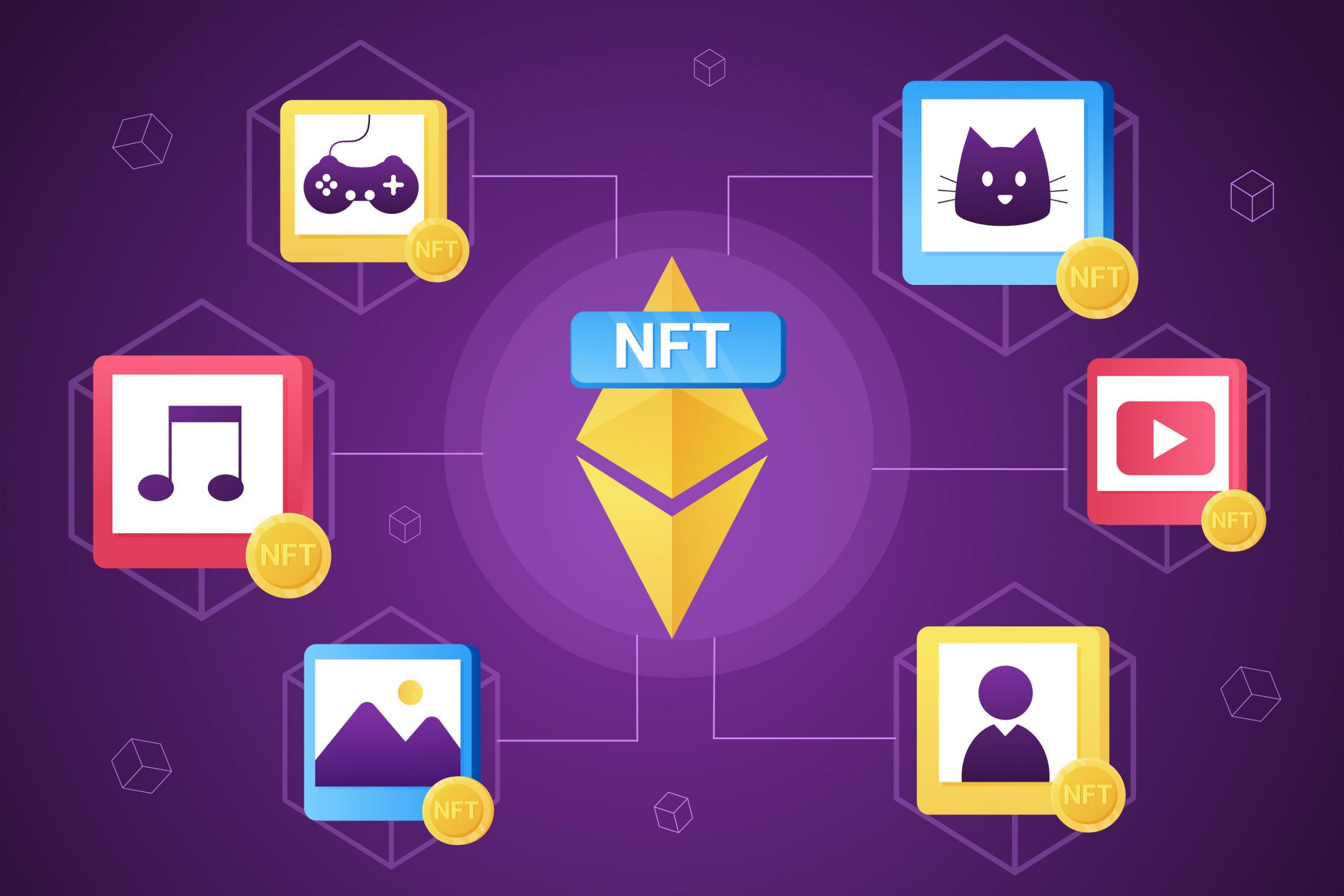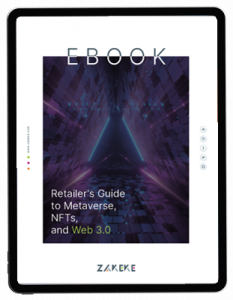In the dynamic and competitive e-commerce landscape, brands continuously explore innovative strategies to engage customers and enhance their shopping experience. One remarkable creative idea is using Non-Fungible Tokens (NFTs) to gamify the shopping experience.
This article delves into the fascinating intersection of NFTs and gamification. It explores how these digital assets are harnessed to create engaging, fun experiences that captivate customers and transform how they interact with brands online.
Gamification and NFT: a match made in Heaven
Gamification, the strategy of incorporating game-like elements into non-gaming environments, has proven to be a potent tool for enhancing user engagement. It’s about making tasks or processes more enjoyable.
For example, fitness applications utilize gamification to inspire users to achieve their health objectives. They offer badges, rewards, and social features to make tracking workouts and meals more entertaining, transforming a routine task into an engaging experience.
In the context of Web2 platforms, gamification has been widely used. Social media platforms like Facebook and Instagram use likes, shares, and comments to encourage user interaction.
For example, gamification elements have been extensively used in e-commerce platforms to make the online purchase experience more entertaining. E-commerce giants like Amazon and eBay use reviews and ratings to engage customers and encourage repeat purchases.
As we transition from Web2 to Web3, the potential for gamification becomes even more exciting. Thanks to the blockchain, Web3 offers fresh avenues for gamification. It provides two primary benefits: enabling rewards ownership and ensuring user engagement traceability.
- Firstly, Non-Fungible Tokens (NFTs) can create unique rewards that can be bought or sold, offering users a new level of engagement and prizes;
- Secondly, blockchain technology provides a transparent and secure method for tracking user engagement and rewards usage, paving the way for interoperable dynamics.
NFTs could be adopted by e-commerce platforms looking to spice up the shopping experience and enhance their loyalty programs.
Gamification of On-chain Loyalty Programs
Businesses have successfully incorporated game mechanics into their loyalty programs, such as earning purchase points, completing challenges, or participating in community activities.
These can then be redeemed for rewards or exclusive benefits, motivating customers to engage more with the brand and fostering a sense of community among members.
On-chain loyalty programs offer a world of possibilities:
- Imagine creating a gamified reward path where each completed level automatically releases an NFT badge;
- a system that automatically unlocks exclusive content or perks, such as limited-edition NFT products;
- You could even generate NFT tickets for exclusive events. With NFTs, you have the assurance that the reward is genuine and not counterfeit;
- Moreover, the brand can tap into a new revenue stream from the trades of rewards and badges in the secondary market. A percentage of each transaction goes back to the platform, creating a continuous revenue generation cycle.
Community is the cornerstone of almost any Web3 endeavor. Giving tradable assets to people who genuinely care about a brand makes it possible to unite them all in one exclusive place and increase their sense of belonging.
How blockchain games can improve brand engagement
Brands are not only incorporating gaming elements into their processes, but they also incorporate their brands into gaming. We’ve previously discussed how brands are leveraging virtual worlds to stay relevant.
Blockchain-based games, also called play-to-earn games, are equally beneficial for brands. Users can earn and own parts of the game as NFTs. Players can be rewarded based on their playing and receive badges as NFTs. They can even own the characters.
In this context, brands have been exploring various strategies. Some have launched exclusive NFT collections within games, like Burberry, while others have developed their own play-to-earn games, like PMU. Some brands, like Louis Vuitton, have even incorporated NFTs into their gaming apps.
NFT gamification examples in e-commerce
Gamification in on-chain loyalty
Starbucks has innovatively integrated NFTs with its Odyssey on-chain loyalty program, transforming it into an engaging game-like experience. Customers embark on ‘journeys’, such as the ‘Doing Good’ journey, which promotes sustainable practices. Upon completion, users are rewarded with unique NFT Stamps that can be traded on NFT marketplaces.
Purchasing an NFT gives members additional “points” that they can use to level up their tier, adding a new layer of engagement and reward for customers. This approach has enabled Starbucks to create a vibrant community on Discord, where members discuss quests, trade NFTs, and provide feedback, enhancing customer engagement and loyalty.
Brands and in-game NFTs
In collaboration with Mythical Games – a prominent Web3 gaming house – Burberry launched a collection of NFTs for the popular Blankos Block Party. This multiplayer party game features digital vinyl toys known as Blankos, which players own.
Burberry introduced a limited-edition Burberry Blanko named Sharky B, an NFT that can be purchased, upgraded, and sold within the Blankos Block Party marketplace. Sharky B, adorned with Burberry’s clothes, is not just a collectible item but also shows a series of attributes, including speed and agility, ensuring its uniqueness and rarity.
As part of this collection, Burberry also launched its branded NFT in-game accessories, including a jetpack, bracelets, and pool shoes, which players can apply to any Blanko they own.
PMU, a major European horse betting company, has entered the world of Web3 by introducing its NFT-based fantasy game, Stables. This game allows players to own digital replicas of real horses.
The performance of the physical horses in real life directly influences the players’ strategy and success in the game. Stables utilizes actual racetrack data and statistics to establish race conditions.
Stables is a prime example of how a traditional brand can use gamification to successfully enter the Web3 space, generate immediate revenue, and create opportunities for valuable partnerships and activations.
In August 2021, Louis Vuitton introduced a game called Louis: The Game, which enables users to navigate a virtual world alongside a character named Vivienne.
The game aims to locate exclusive brand postcards (NFTs) while navigating the brand’s 200 years of history. The brand aimed to expand its influence and engagement with young consumers by launching this game.
In contrast to other companies that have simply auctioned off NFTs, Louis Vuitton encouraged fans to solve puzzles within the game to participate in a raffle for ten distinct NFTs featuring Vivienne in various fashionable appearances. These NFTs could be utilized as profile images and could be transferred across different platforms. Louis: The Game garnered over two million downloads.
Benefits of NFT gamification in e-commerce
In the world of e-commerce, NFT gamification holds the potential to revolutionize how customers interact with brands. Brands are harnessing the power of NFTs to create unique, immersive experiences, as demonstrated by Starbucks’ blockchain-based loyalty program, Burberry’s in-game NFTs, and Louis Vuitton’s gaming app.
These examples underline how NFTs can enhance brand engagement, foster customer loyalty, and build community. As we look ahead, the convergence of brands and gaming is poised to grow, mainly as brands aim to captivate a younger audience. The future of e-commerce and e-commerce gamification is unfolding, and it’s NFTs that play a significant role.

DVRS
DVRS is a pioneering Web3 studio, guiding brands on their blockchain journey. With a team of seasoned blockchain engineers and crypto-native experts, they create immersive experiences and build digital communities, setting new standards in the Web3 space.














